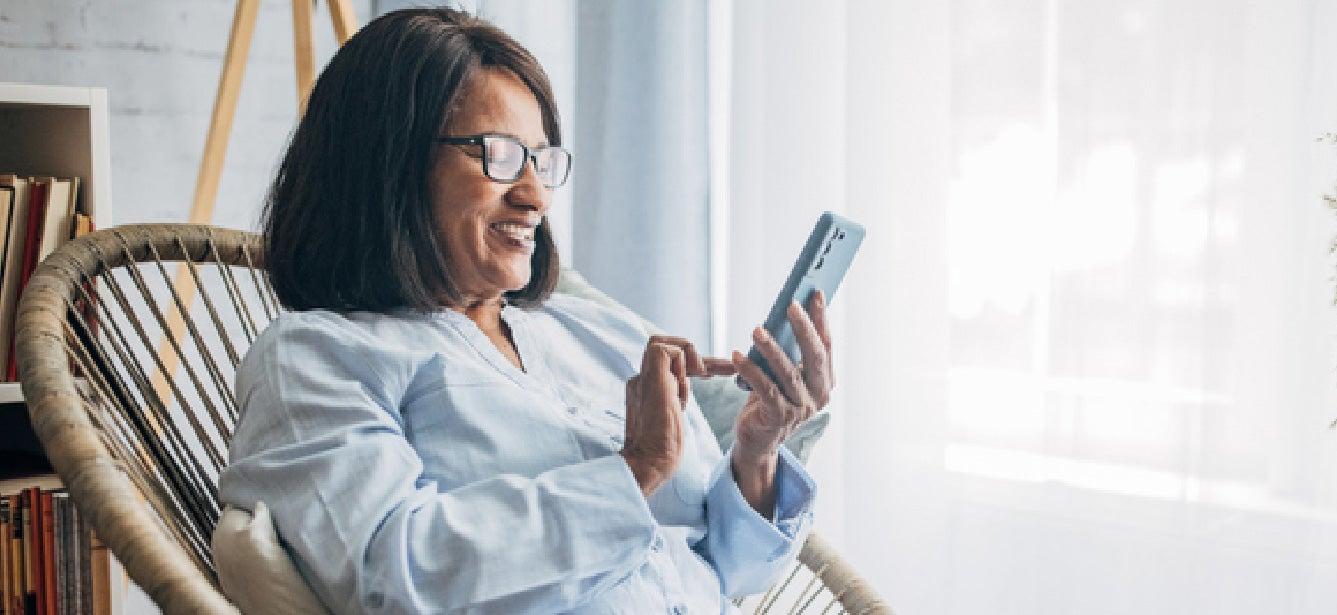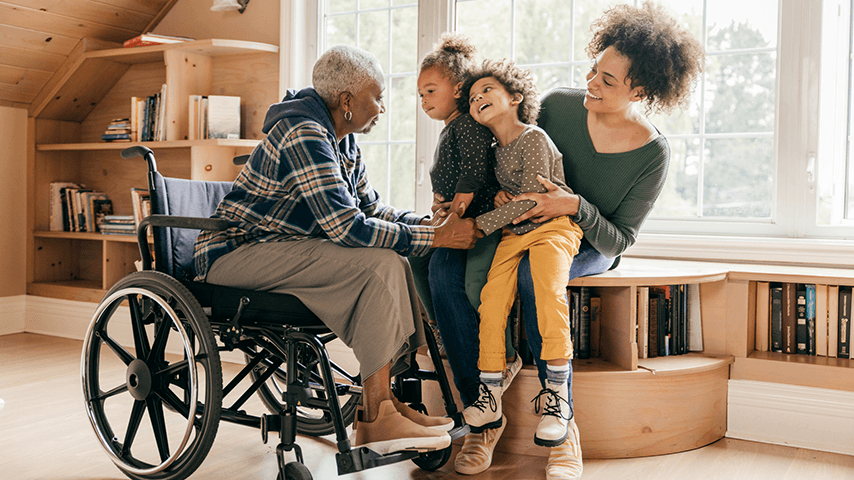
Related Topics
In today’s high-tech world, telephones and internet service truly are lifelines. But if your budget is stretched, these essential items can seem like luxuries. If that’s the case, there’s a government program that may help you stay connected. It’s called Lifeline.
What is the Lifeline benefits program?
Lifeline is a program that offers a monthly discount on phone or internet service to people with limited income. Lifeline was established in 1985 as a Federal Communications Commission (FCC) program. It is administered by the Universal Service Administrative Company (USAC).
“Access to telephone and internet services is vital for everyone, and especially older adults,” said Jen Teague, NCOA’s Associate Director for Health Coverage and Benefits. “It keeps us engaged with friends and family and lets us access services, information, and entertainment.
Lifeline assistance can help keep this connection strong for older adults living on limited resources,” Teague said.
What does Lifeline pay for?
Lifeline helps people who qualify pay for one of these services:
- Landline
- Cell phone
- Broadband internet service
- Bundled voice-broadband packages
How much does Lifeline pay?
The Lifeline program offers a monthly discount of up to $9.25 on one service per qualifying household. People living on Tribal lands are eligible for a discount of up to $34.25 per month. Telephone and internet service providers apply the discount to your monthly bill.
Am I eligible for Lifeline assistance?
You are eligible for Lifeline assistance if you participate in one of these programs:
- Medicaid
- Federal Public Housing Assistance (FPHA)
- Supplemental Nutrition Assistance Program (SNAP)
- Supplemental Security Income (SSI)
- Veterans Pension and Survivors Benefit
You also qualify for the Lifeline discount if your income is at or below 135% of the federal poverty guidelines. Find out what that amount is for your household: 2024 Poverty Guidelines.
If you live on Tribal lands, you are eligible for the Lifeline discount if you meet one of these criteria:
- Your household income is at or below 135% of the federal poverty guidelines
- You receive benefits from one of the federal programs listed above
- You participate in a Tribal assistance program
What other requirements does Lifeline have?
There are several program rules. Here are some key points to remember:
- Understand household eligibility: Only one person in a household can receive the Lifeline assistance program. “A household is a group of people who live together and share money (even if they are not related to each other),” the USAC explains. Learn more about these rules in What Is a Household?
- Watch for recertification: “Every year, USAC will check to confirm you still qualify. If we cannot confirm you qualify, you will receive a letter in the mail and may also receive reminders by mail or pre-recorded messages on your phone,” the USAC writes on its website. “If you are asked to recertify, you must do so within 60 days, or you lose your Lifeline benefit.”
- Keep your provider in the loop: “If you change your address, no longer qualify for Lifeline, or more than one person in your household gets Lifeline, notify your company within 30 days,” the USAC says.
- Be accurate: “Be honest on your application and forms. It is against the law to lie on any Lifeline-related forms or questionnaires,” the USAC cautions.
How do I apply for the Lifeline assistance program?
You can apply for the Lifeline assistance program in three ways:
1. Use the online Lifeline National Verifier. The USAC says this is usually the fastest option.
2. Print and complete the Lifeline application and mail it to the address on the form.
Mail to:
USAC, Lifeline Support Center
P.O. Box 9100
Wilkes-Barre, PA 18773
3. Contact a telephone company or internet service provider that offers the Lifeline benefit. To find a participating provider, use Lifeline’s phone or internet company search tool. If you already have a service provider, you can call and ask if they participate in the Lifeline program.
What information will I need to provide when I apply?
When you apply, you will provide your name, phone number, date of birth, email address, home address, mailing address (if you have one), and the last four digits of your Social Security number or Tribal identification number.
You’ll also select which government program(s) you participate in. Or, if you’re qualifying through your income, you’ll complete that portion. You can click here to see a copy of the Lifeline application form
If you apply by mail, you will need to include documents that show you are enrolled in one of the government programs. Or if you are qualifying for Lifeline assistance through income, you’ll need a document that verifies your earnings. You can review a list of documents to help you prepare for completing your Lifeline application.
When you apply online, the Lifeline National Verifier may be able to confirm your income or participation in a government program without you having to provide documents. If they can’t do so, you’ll be asked to submit them.
Who should I contact if I need help with my Lifeline application?
If you have questions about Lifeline, you can call the Lifeline Support Center from 9 a.m. to 9 p.m. ET seven days a week. The Lifeline customer service phone number is (800) 234-9473.
You can also email questions to LifelineSupport@usac.org. Make sure to include your first and last name, application number, and the reason for your email.
How can I find out if I qualify for other benefits?
You can find out if you qualify for other benefits by using BenefitsCheckUp®, NCOA’s free, confidential online tool.
“BenefitsCheckUp® helps millions of older adults and people with disabilities find vital services that can enhance quality of life and well-being,” NCOA’s Teague said. “You don’t want to miss out on benefits you may be eligible to receive.”



